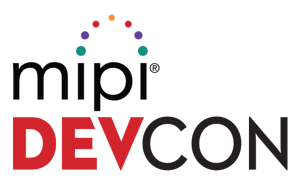MIPI I3C Sessions
Following the recent release of the draft MIPI Improved Inter Integrated Circuit (I3C) Specification and the publication of the MIPI I3C whitepaper, MIPI Alliance's upcoming developers conference (Sept 14-15 in Mountain View, CA) provides the opportunity for in-depth learning from some of the experts involved in its development. Here are some of the key sessions that will highlight MIPI I3C over the two-day event:
A Developer's Guide to MIPI I3C Implementation
Preparing to implement MIPI’s new sensor interface, I3C, in your next design? This presentation will provide early adopters of MIPI I3C with targeted guidance on how to ensure a successful and efficient implementation of I3C in their products. Leveraging I2C as a foundation, many components of I3C will be familiar to implementers, but with guidance provided here, attendees will leave with a clearer understanding of MIPI I3C’s new innovative features, how they will improve their systems, and what considerations should be made to fully leverage them. Implementation guidance will include, but not be limited to, support for legacy I2C devices, understanding network topology tradeoffs and good design practices. |
I3C High Data Rate Modes: From Spec to Real-Life Devices
The MIPI I3C standardized sensor interface provides a number of significant advantages over existing digital sensor interfaces. One of the most advanced features is the ability to operate in I3C High Data Rate modes, HDR-DDR, HDR-TSP and HDR-TSL, which provides the best performance in both speed and power. Designing and verifying an I3C interface with these operation modes brings multiple challenges such as: backward compatibility with I2C designs, mixed buses hosting different kinds of devices, operation in different speeds and so on. This presentation will briefly present I3C interface basics and will focus on various verification aspects of I3C HDR modes through an advanced verification methodology based on coverage-driven verification and real-life scenarios. |
Getting in Touch with Your Phone
 James Goel James GoelDirector – Technical Standards
Qualcomm Technologies, Inc.
Dale Stolitzka Mobile stylus and touch applications commonly use proprietary interfaces to connect a variety of on-cell, in-cell and
|
Meeting Demands for Camera and Sensor Interfaces in IoT and Automotive Applications
Enhanced IoT and automotive applications are driving demand for multiple camera interfaces to enable embedded vision use cases. This presentation will outline typical camera and display use cases for automotive and IoT applications, as well as how multiple Rx and Tx image streams can be integrated into an SoC to create a flexible and reusable architecture. The presentation will also provide a quick overview of the MIPI CSI-2 and I3C specifications and their key features that are important to meeting the required functionality, performance and power targets. |

 Ken Foust
Ken Foust

 Hezi Saar
Hezi Saar
